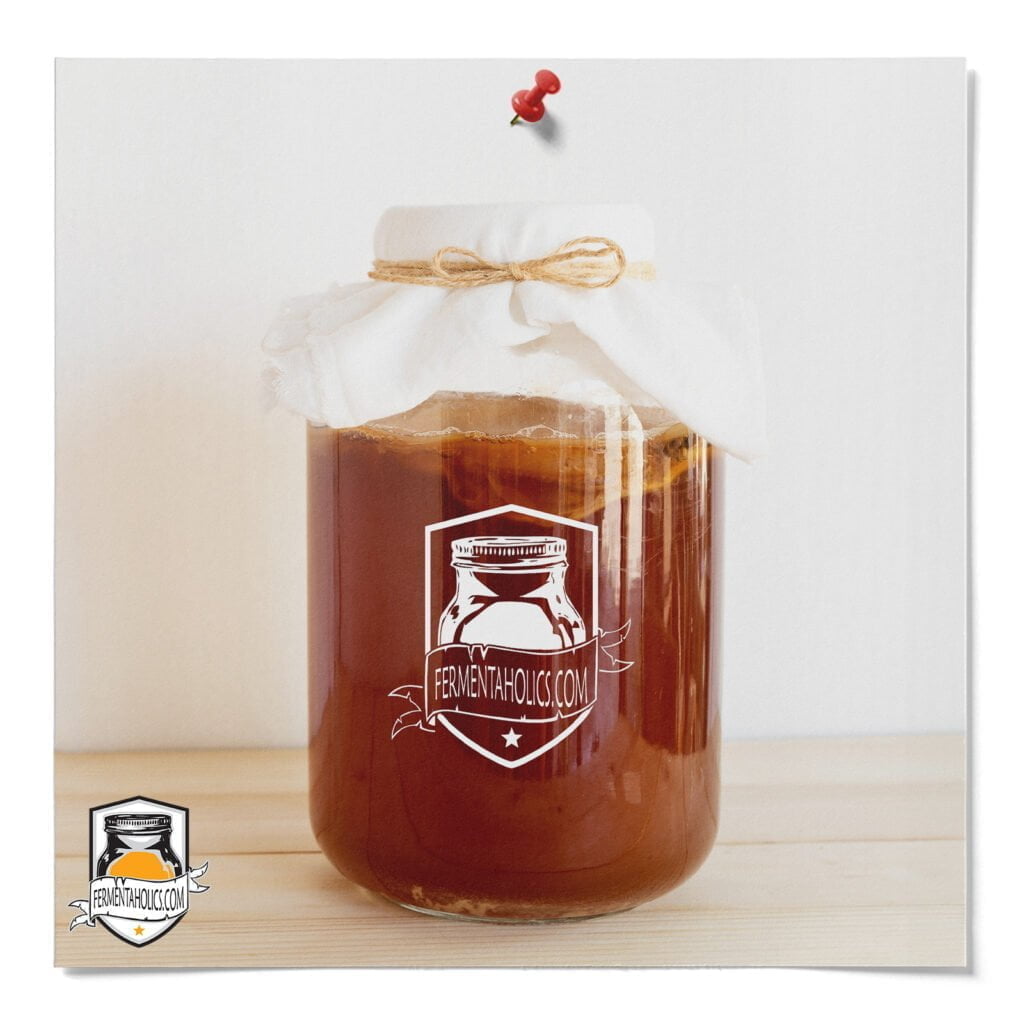
“The classics are a classic for a reason.” We’ve probably all heard this phrase at one point or another, and we probably all have something that immediately pops in our head as proof of it: Classic Coca-Cola, a Plain Cheeseburger in all of its glorious simplicity, or even just a classy bowl of yogurt and granola. One new addition that should be on all our lists, especially us homebrewers, is the classic, plain Kombucha.
Now don’t get the word “plain” misconstrued – this beautifully balanced beverage is anything but with its diverse flavor profile, natural body-boosting nutrients, and positively propitious probiotics. Simply put, classic, plain Kombucha has been around for thousands of years for a reason, so now it’s time for you to brew a batch and see why!
The key and really only additional ingredient here is Real Sugar. Now you may be asking yourself, “as opposed to what?” Well, real sugar is going to be any fermentable sugar, which includes cane sugar, honey, Fermentaholics invert sugar, or even maple syrup. This Real Sugar is what carbonates the Kombucha during secondary fermentation. For a full list of Real Sugars you can use, check out our article best sugar for kombucha brewing.
So we’ve got our simply superb ingredients ready, but how much? This really depends on your preference, but anywhere from ½ – 1 tsp for each 16 fl oz bottle will work. Just measure your Real Sugar and, using a funnel, add it right to a clean 16 fl oz bottle.
After you’ve added your Real Sugar, it’s time to fill the bottles with kombucha. Fill each bottle up, leaving about 2″ of headspace. Cap the bottles tightly, label your bottles and place them in a warm location for 2-3 days for the secondary fermentation. When you’re happy with the flavor, place the bottles in the refrigerator to halt the fermentation

It’s important to note that making homemade kombucha is almost always a two-step fermentation process. Brewing kombucha is only a one-step process for those who prefer an unflavored flat kombucha. Otherwise, the steps consist of a primary fermentation and secondary fermentation.
Primary fermentation is the first step of the kombucha brewing process. This is where your SCOBY transforms regular sweet tea into the tart and slightly sweet kombucha we love. At the end of this stage, you will have finished kombucha, but it will be flat and unflavored. Have you skipped this step? Then check out our guide on how to make kombucha at home, and for jun kombucha, see our post on how to make jun kombucha tea at home. Traditional kombucha is going to yield a bolder brew, while jun kombucha is milder and can be a bit tarter.
Secondary fermentation is the step where you bottle, carbonate, and flavor your kombucha with the addition of sugar and flavors. In this step, the finished kombucha from the primary is mixed with sugar, fruits, or other flavors before bottling it with specialized lids that can hold pressure, like flip-top bottles. The bottled kombucha is then left at room temperature for natural fermentation, where yeast carbonates the kombucha within the sealed bottle. The ideal temperature range for this process is between 75-85°F. The amount of time needed to carbonate within the bottle is highly tied to temperature, which can take anywhere from 2-10 days.
💡Since this recipe is for the secondary fermentation, to make this recipe, you’ll need to have kombucha that has finished the primary fermentation and is ready to bottle.
Kombucha: You need kombucha that has completed primary fermentation and is ready to bottle and flavor.
Real Sugar: We recommend organic cane sugar as our ideal Real Sugar partner for our Kombucha, especially if it is your first batch. It gives a nice benchmark and lets you know your baseline of flavor for when you want to start infusing and following any other one of our delicious recipes, like our Raspberry Lemonade Kombucha.
This recipe makes one 16-fluid-ounce bottle. A 1-gallon batch of kombucha will make seven 16-ounce bottles, so for one gallon, you will need to multiply the ingredients by 7. Before beginning this recipe, you will need to:
16 Fl Oz Bottles
10
Minutes2-10 Days
This Classic kombucha recipe is for one 16 fluid ounce bottle. For a gallon batch, make seven bottles. To scale this recipe to a gallon batch, multiply the ingredients by seven or toggle the serving size up to seven above. Before bottling your kombucha, remove the SCOBY pellicle along with 12-16 ounces of kombucha starter tea from your brew, and reserve for your next batch.
16 oz kombucha from a completed primary fermentation
1/2-1 tsp cane sugar
1 16 oz airtight bottle(s)
1 Funnel
Place clean 16 oz bottle in the sink.
Add ½-1 tsp of your cane sugar to the bottle.
Using a funnel, slowly pour kombucha from your brew jar into the bottles, ensuring there is about one inch of headspace left from the top of each bottle. The kombucha may foam up as you pour so be sure to pour carefully.
Tightly place caps on each bottle.
Keep bottles at room temperature for 2-10 days; it will carbonate faster at higher temperatures and slower when cold.
Burp the bottles as necessary to release excess pressure. This is done by removing the cap to allow built-up pressure to escape then placing the cap back on.
Chill in the refrigerator once you’re happy with the carbonation levels. You can serve as is and enjoy!
